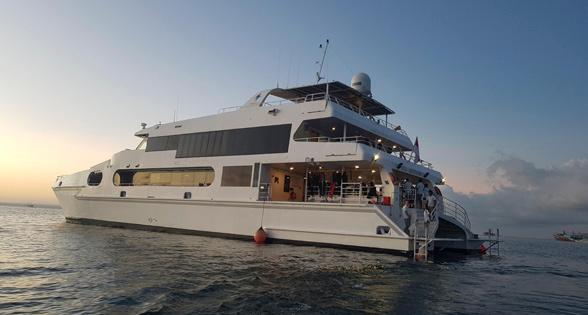
12 minute read
Raja Ampat – The Adventures of a UAD Diver
FEATURE SARAH MESSER PHOTOGRAPHY NICHOLAS CHEUNG
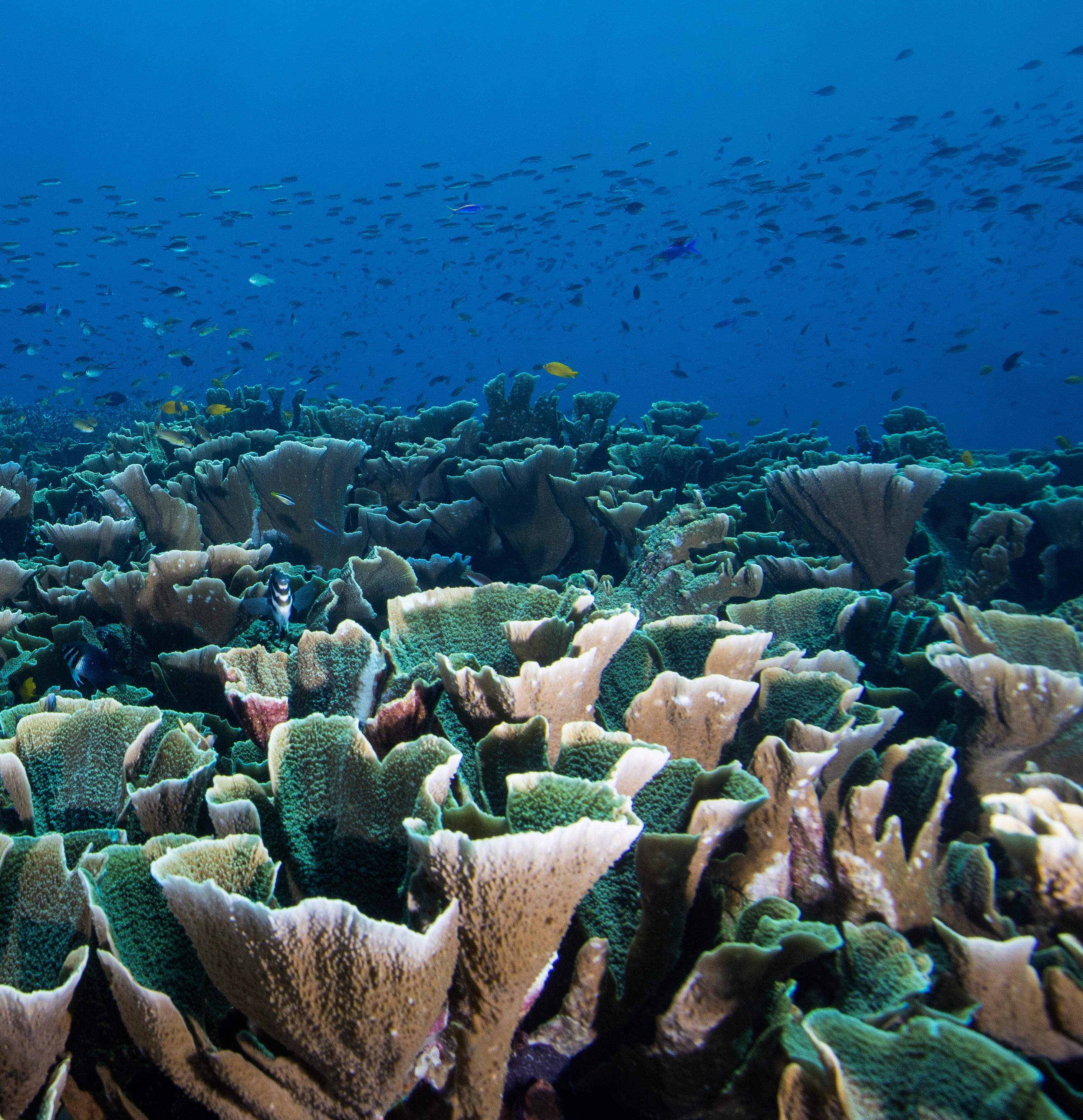
Tis the season to be jolly! Around October each year, my parents and friends usually confirm who is coming to Dubai to visit for Christmas and New Year. However at the end of last year, with Mum and Dad packed off to my brothers for the festive period, I found myself free and wondering what to do. It was the first time I was packing up my dive gear to head somewhere new as well as do something new to ring in the new year.
I hummed and ached, plotted and planned, and eventually decided to tick off one of my top choices on my ever expanding list. I chose one of the worlds’ most famous diving destinations, regularly featured amongst the top spots to visit – Raja Ampat, Indonesia.
The “liveaboard or not” conundrum is mainly taken away from you in Raja; it is possible to get to dive sites staying on the islands, but you can only cover the distance between South and Central Raja with a liveaboard. If you choose the island route, be prepared for very basic homestay options. A liveaboard will give you far greater dive site coverage and distances.
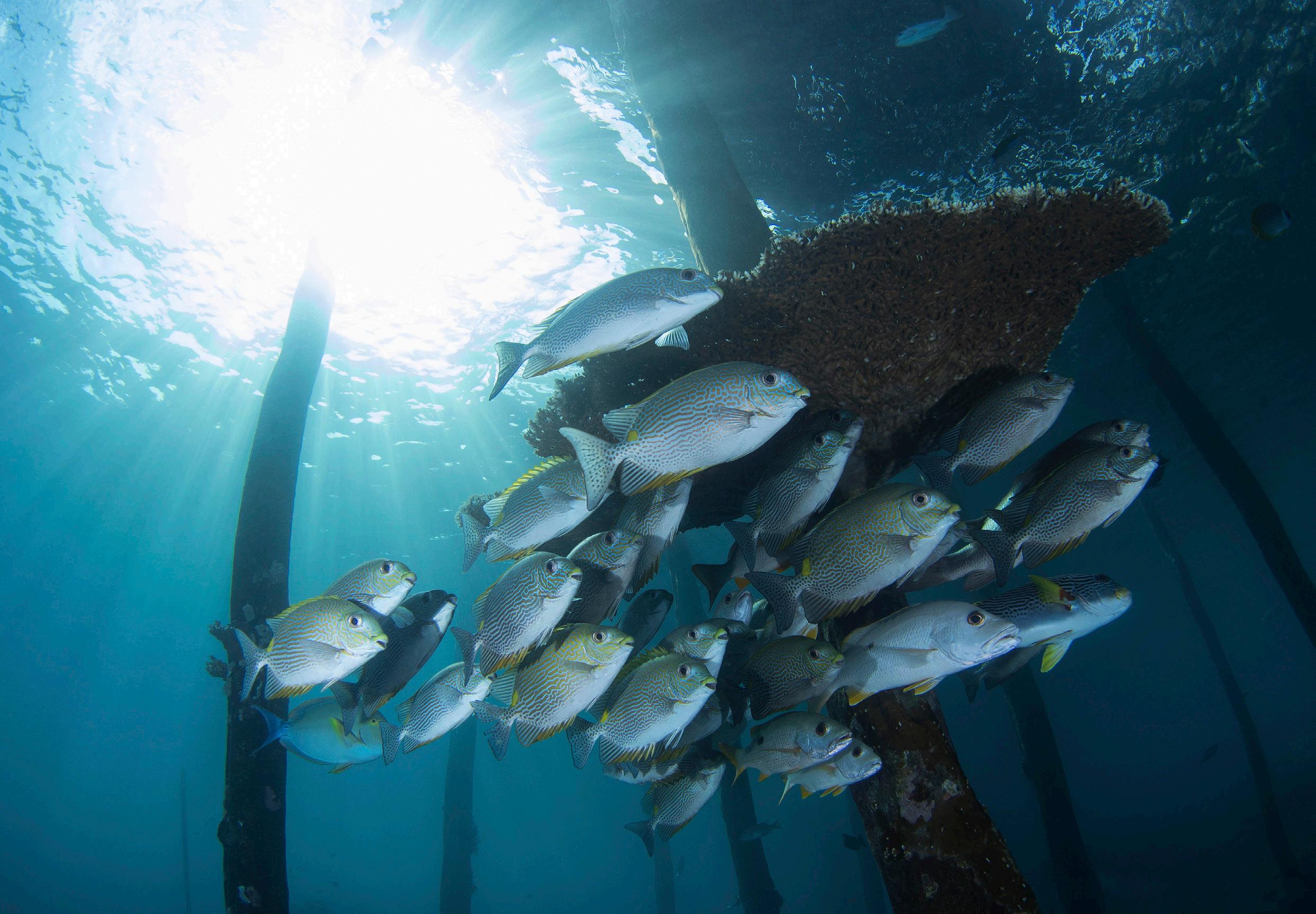
CHOOSING YOUR LIVEABOARD
The Raja Ampat season runs from September to April each year, outside of these months the sea can be rough and visibility poor. Most of the liveaboards there (and there are many) split their annual calendar in two – spending May to August in the Komodo National Park, and the rest of the year in Raja. Something you may not know, is that the boats also run ‘crossing’ dive trips, for 11+ days, where they move from one destination to the other. I haven’t done one yet myself (added to the expanding list) but I’m told as they cross the Bandar Sea, there is the rare chance to go to some spectacular sites that not many divers know about or have the opportunity to get to.
With so many available liveaboards covering Raja, you can really start to get picky and look for a setup and price range that will work for you. Revisit ‘The Adventures of a UAE Diver’ article from the last EDA December magazine issue 2019 to remind yourself of the safety tips to ask about when booking your trip. Big, small, old, new, wooden, sails, yacht, engines, you’ll find every type of boat in Raja Ampat.
It goes without saying, a budget price will come with budget facilities. Always make sure to read the description and reviews from other passengers carefully to be clear on what you are buying into so that your expectations are realistic. For this trip, I blew caution to the wind and spent the big bucks on ‘Solitude One’, for a more luxurious vessel. It wasn’t the most expensive boat available, but certainly above the average price. I also wanted a less traditional boat, and the Solitude is a modern yacht which stood out from the other options.
I had actually seen ‘Solitude One’ a few months earlier when I was planning my Eid trip to Komodo, and had enquired about it, but it wasn’t sailing at that time – and in fact, if I had taken that trip, I wouldn’t have met the lovely EDA Magazine Editor, Ally Landes at Scuba Junkies’ dive centre, and then you, Dear Reader, wouldn’t be reading this!
So for this reason, I knew the boat had recently been renovated and refurbished, and gone through all the newest safety checks. TICK – book me on!
As a side note, I have booked all of my liveaboards so far through www.Liveaboard. com. They are a UK based company, and I’ve always had excellent service from them. They respond quickly to questions and give detailed information. There are of course many other booking agents, I just haven’t needed to look outside of this company thus far. They seem to have a wide selection of boats per destination and good pricing.
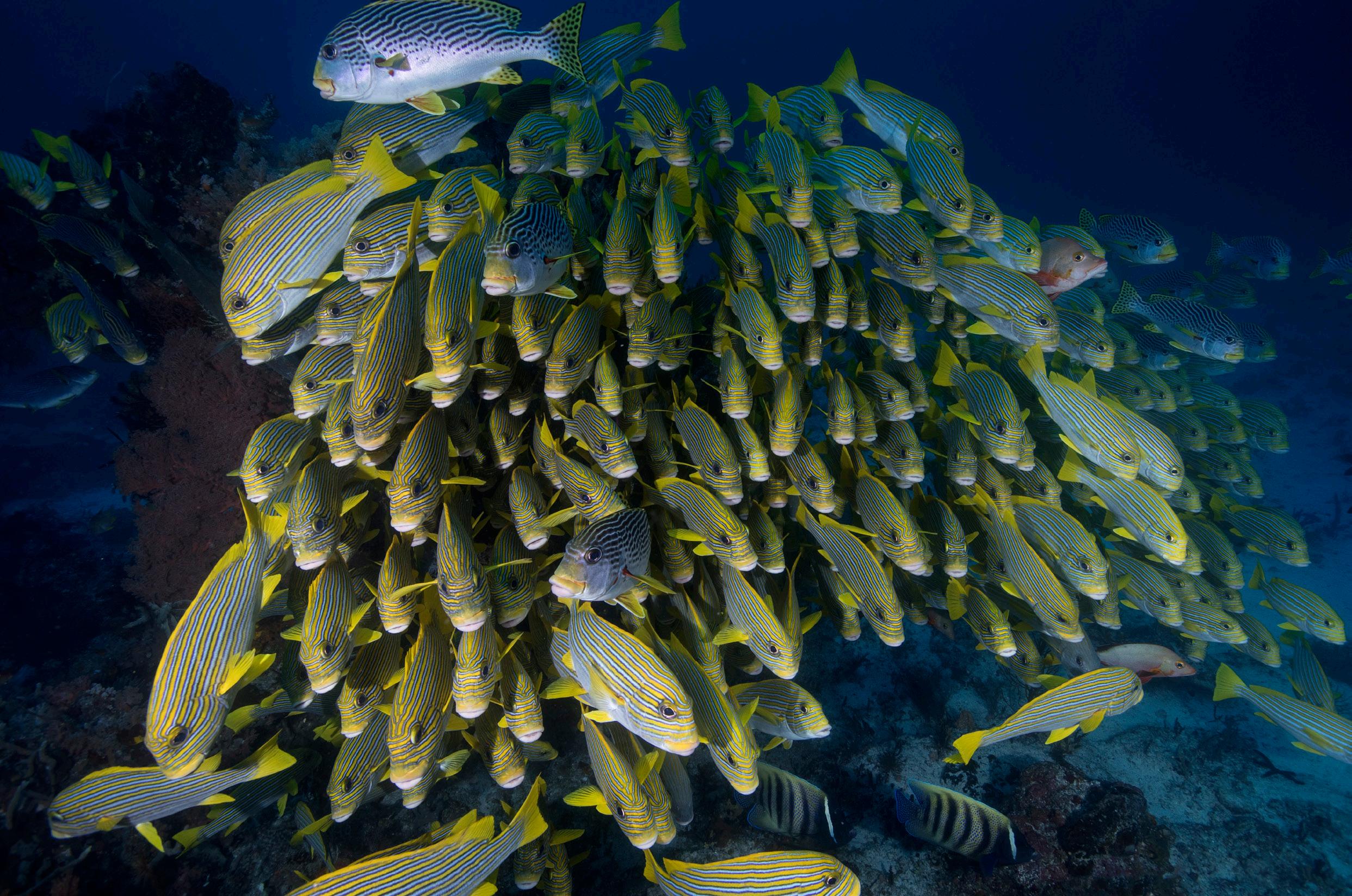
GETTING TO RAJA AMPAT
When the boat is booked, it’s time to start finding flights – and Raja Ampat is one of those destinations you need to spend some time planning to line up your schedule carefully. Be prepared to spend a couple of days travelling to get there. I took a direct flight from Dubai to Jakarta, then an internal flight for another 4+ hours to Sorong, on the island of New Guinea. Once in Sorong, my buddy and I spent one night in the Swiss Bel Hotel before boarding our boat the next day.
A useful point to note – we might look to add on a couple of land days either side of a diving trip to see and experience the local life. In Sorong there is really nothing to do and nowhere to visit. If you were staying for several days you might hire a car and drive further out, but if it’s just to spend some extra days in Sorong, it’s not worth the additional vacation days. I can also highly recommend the Swiss Bel Hotel – having heard stories from divers about the other hotels – this one was clean, had polite, friendly staff, and good food.
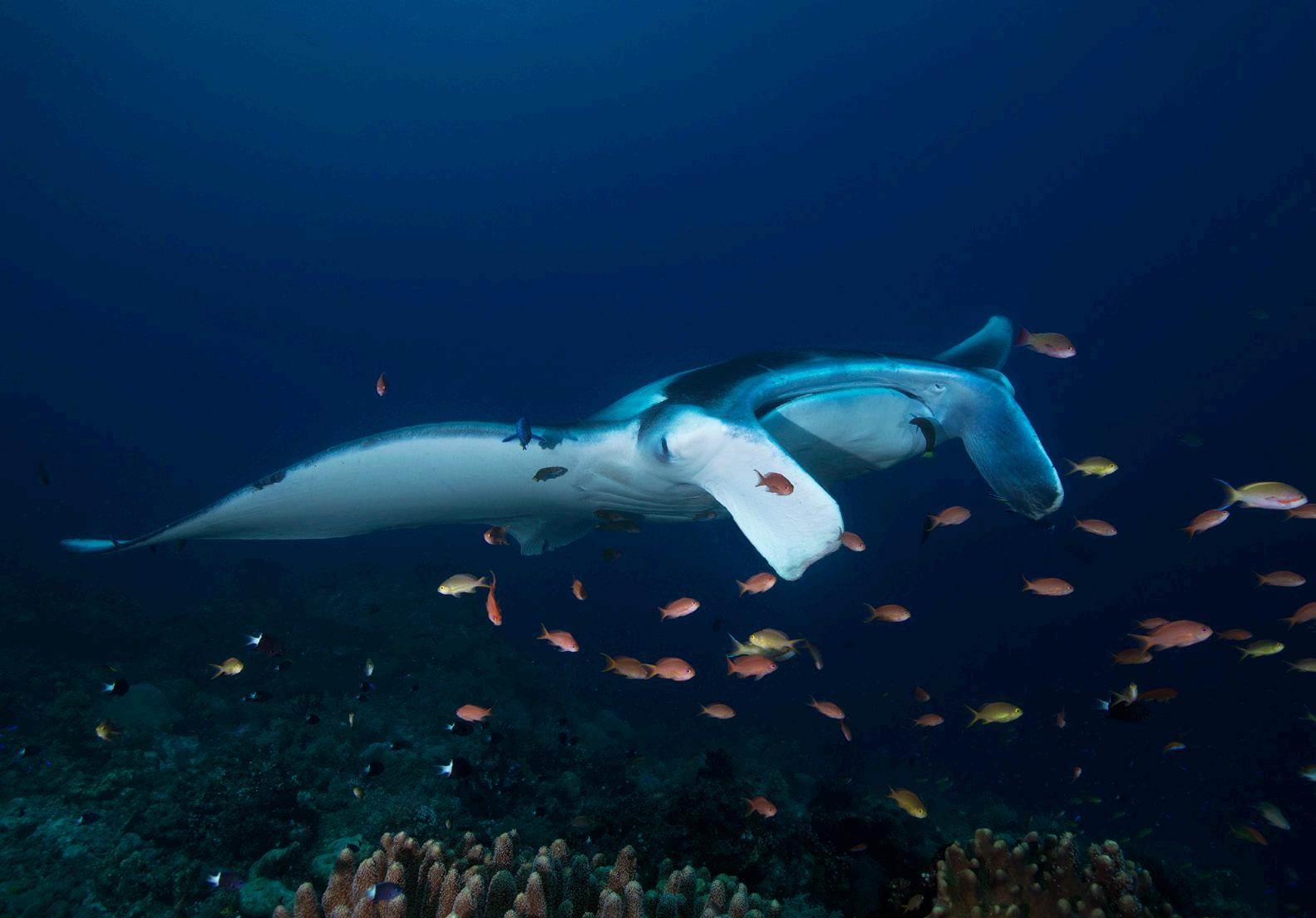
SOLITUDE ONE
Having been on a few liveaboards now, I knew as we approached the boat the next day it was going to be special. Shiny white and gleaming in the sunshine, the first thing you really notice is the lovely big dive deck – it’s wide and spacious. Perfect for gearing up and down everyday without clobbering your neighbour in the eye with your reg or tripping over your buddy’s fins. And really this is one of the things I liked most about the Solitude One, it’s a big boat (actually it’s a catamaran, which makes for very smooth and quiet sailing, even if the weather is bit rough) but they haven’t tried to cram as many divers as possible onto it.
At maximum capacity it has 20 divers and 22 crew. All bedrooms are big enough to be perfectly comfortable with en-suite bathroom. The lounge and dining area is large and roomy with a sofa and TV set-up in the middle. Even the kitchen is bigger compared to others I’ve seen, and I can’t help but think a happy chef, means better food! There is plenty of room for sprawling and dozing between dives both inside and outside on the top deck, and if you prefer to be working on your camera settings when not in the water, there is a dedicated camera room. The divers on my trip even found the space for a make shift gym to daily exercise. It really is the most modern and pristine liveaboard I have seen, and the owners have really thought about all a diver’s needs and comfort. With a warm dry towel handed to you immediately after every dive, they really have thought about all the little things that make a difference. Comfort is the boat’s best physical attribute.
Our dive guide for the trip, Peter, is exactly the kind of guy you want running the show. The right mix of, ‘this is what we do and how we do it, and that’s that’, so everyone knows what is expected of them; excellent knowledge of the dive sites and the marine life we found there; and relaxed, and sociable. In fact all of the dive guides were very knowledgeable, and some of the local guys – especially – knew the dive sites inside-out and backwards. The daily routine was clear: • Wake up between 5-6 am depending on first site; • Mini breakfast of cereal and toast; • First morning dive; • Proper cooked breakfast; • Snooze; • Second morning dive; • Lunch; • 2 hour snooze; • Afternoon dive; • Snacks; • Brief snooze; • Night dive when allowed (we did 3 or 4 across the week); • Dinner; • The day is over after 9 pm.

DIVING IN RAJA AMPAT
Raja Ampat (translated as Four Kings) forms part of the coral triangle and is an archipelago formed of 1,500+ islands. It is famous for its extreme biodiversity, with more species of coral and the highest variety of marine life than anywhere else in the world. Today it is a highly protected area where its pristine condition is continuously maintained and monitored, and its marine life can continue to flourish. In fact since protection laws were introduced some years ago, shark and fish numbers have grown considerably, demonstrating how important it is that these ocean environments are given protected status.
We started by heading to South Raja, and were promised soft corals and bright colours. True enough, every dive site we visited looked like a summer garden in full bloom, with coral flowers dancing in the water and catching the light. Huge schools of fish swoosh in and out of the coral structures in every direction. There are also very special sharks here that are only found in two locations in the world – the Wobbygong shark in Raja and Australia. We would find one on most dives, sleeping under a ledge. They are very unusual and look like an old man with a straggly beard, they have a flat head, and the most intricate pattern on their skin looks like a tapestry.
My two favourite dive sites in the South were on the same day, Kaleidoscope and Four Kings, both were just teeming with life and colour. They are the kind of dives you could do repeatedly, over and over.
At this point, you’ve forgotten it was Christmas, right? Our last day in South Raja was Christmas day, and we got the best presents any addicted diver could wish for. First dive, a lone Manta ray at a cleaning station; second dive a school of hunting Mobular rays swooping through the sea like an aeroplane squadron in formation; third dive, multiple Mantas dancing their graceful ballet for us for a whole hour. I had clearly been a good girl, these were the best Christmas gifts I could have hoped for.
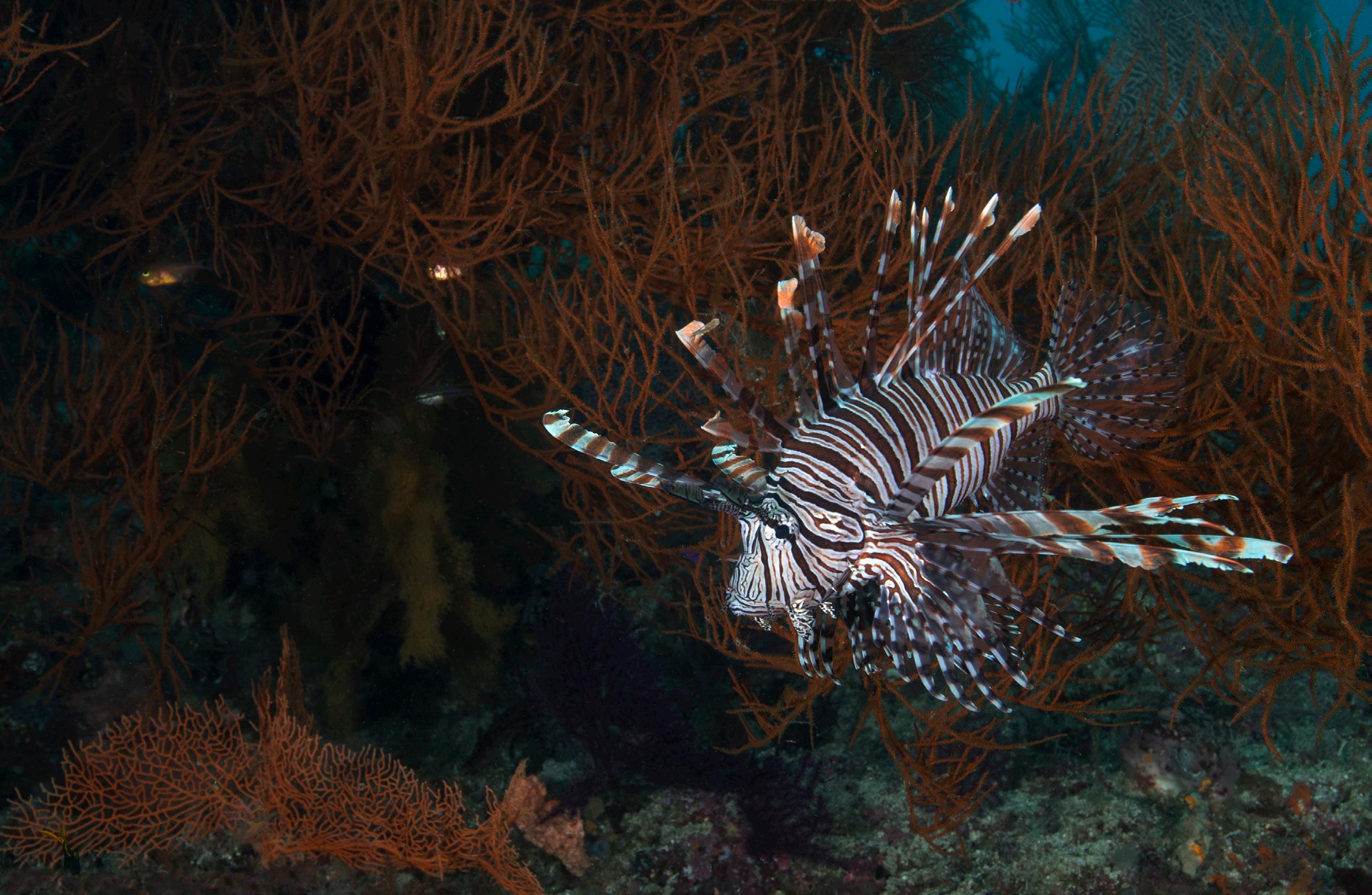
We then made our way northwards to Central Raja, and the scenery changed completely. There is much more hard coral at the central dive sites, and if the south looked like summer gardens, then these sites looked like that of winter gardens – more wintry colours of browns, dark greens and reds. Several dive sites looked like they were under snow because of the white coral. Their polyps looked like snowflakes scattered all over the place.
The marine life is just as abundant, but also very different. There were fewer of the large schools of fish, but more micro creatures to look for. There were many types of beautiful delicate Pygmy seahorses which were incredibly hard to spot as they were so camouflaged with the coral fans they live on. And so many varieties of Nudibranchs of all shapes, sizes and colours. The old man Wobbygong shark sleeping under the rocks is also found here.
On the fifth day, we briefly went on to land to walk up to the Pianemo Viewpoint which is the most famous image of Raja Ampat you see so often of the multiple small islands surrounded by the beautiful azure sea. The locals have built a stairway so that you can get up to the viewing platform to take photos. It really is a spectacular view and well worth the effort to climb up.
The last dive we did, was a night dive by Yenbuba Jetty. It’s a dive all about the zooplankton, and I thought I knew what plankton was until I experienced this for myself. I had a buddy with me who is specifically fascinated by zooplankton which helped me to learn more. Once the sun had set, millions and millions (and really, I mean MILLIONS) of tiny little baby sea creatures still in their transparent egg sacks, came out from under the sand. The sea was thick with them, it was like diving through soup, and you could feel them on your skin. This may not sound pleasant, but when you stop to look closely, you can identify the teeny creatures. My buddy had a special light to attract them and when he turned it on, the millions became billions of swarming larvae all rushing towards the light. It was amazing!
A good hot shower later, soon got rid of the feeling that things were crawling all over you…
This was truly one of those trips that you never want to end. The lovely boat, the great crew, the good food, a super group of divers, all made this Christmas trip very special. I now fully understand why Raja Ampat is one of the best diving destinations in the world. It is quite simply magical, and likely one of the few remaining places on earth where the biodiversity is still standing and surviving climate change. Long may it last that way.

2020 – THE YEAR OF SHARKS!
As the year of 2019 faded away into the New Year of 2020, I reminisced and remembered, and looked back through my photos. What a year 2019 was for this addicted diver!
Aside from the multiple trips to Fujairah and the Daymaniyat Islands, I was lucky enough to dive in the North Ari Atoll in the Maldives, Hurghada in Egypt, and the Komodo Islands, as well as adding this wonderful trip to Raja Ampat in Indonesia. I fell in love with mantas last year, forever will they hold a special place in my diving world. And if 2019 was the year of the manta, then I am claiming 2020 as the year of the shark. In fact, as I write this article now, I am en route to Bimini in the Bahamas for their legendary shark dives – watch this space for more to come on that topic.
Until next time, dive safely and dive often!
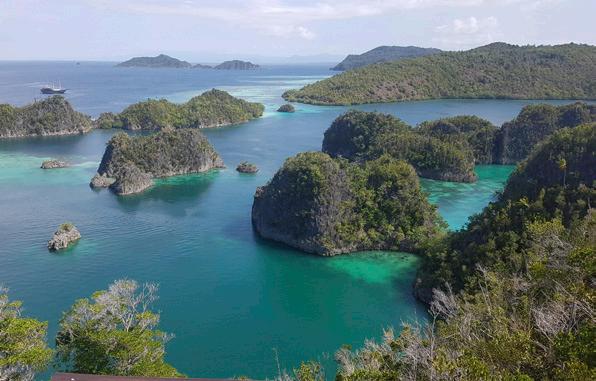
For more details on this specific trip and liveaboard: SOLITUDE ONE: www.solitude-one.com
AGENT: www.liveaboard.com
